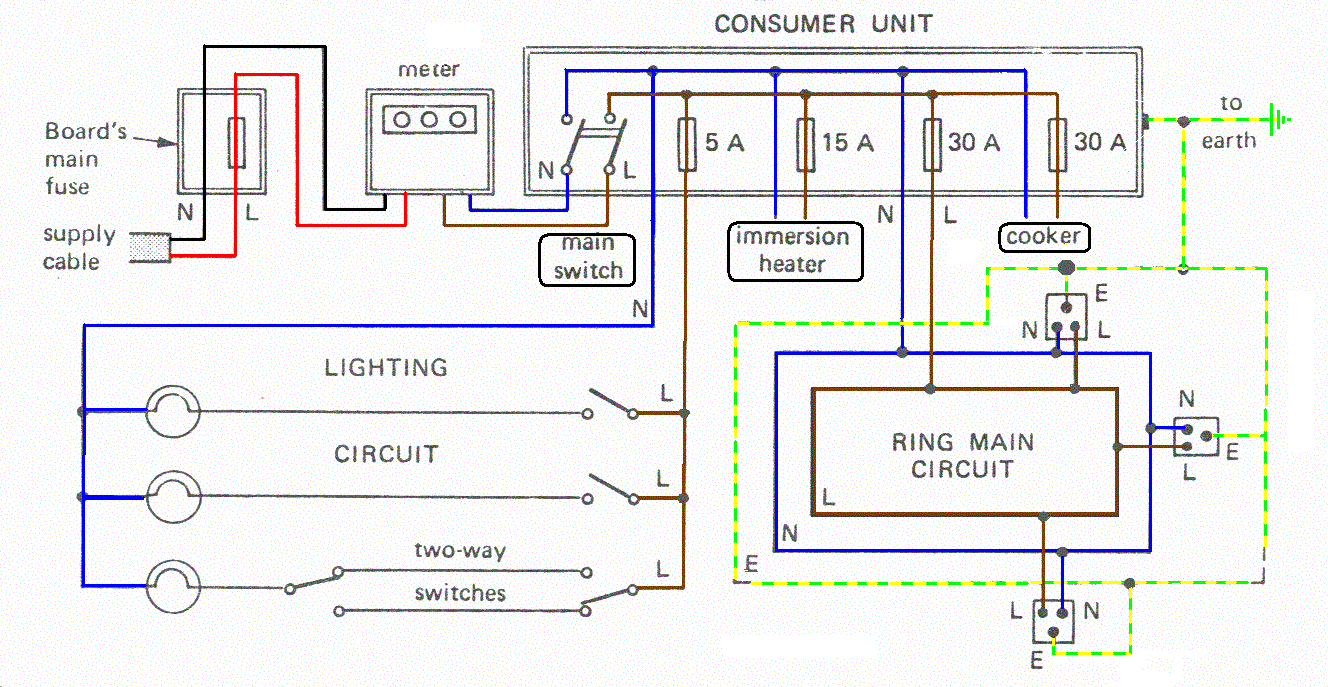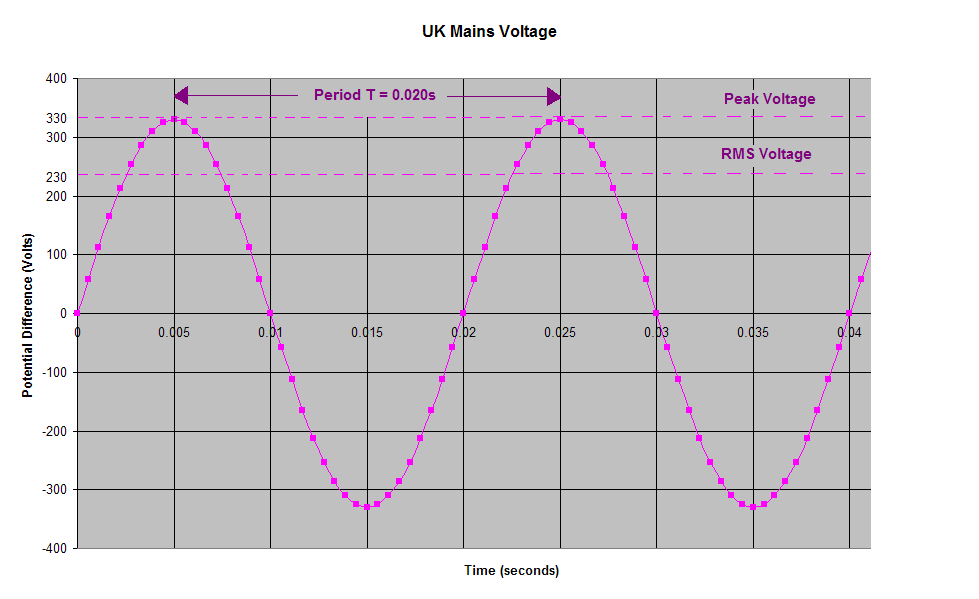House
Wiring

(click on the diagram to see an enlarged version)
The neutral is earthed at the local sub-station and so there is no p.d. between it and the earth. The live wire is 230 V A.C. and oscillates between +330 V and -330 V .
N.B. You should be able to sketch the above diagram!!
The ring main circuit
has live and neutral wires each running in complete rings around the
house (there is usually one ring upstairs and another downstairs). Another ring of wire
connected to earth at the house (by connection to a metal water pipe or
an earth connection on the supply cable) also runs around the house. (See Sockets can then be easily connected in parallel across these wires at desired points without much trouble. A fuse of 30 A is included in the consumer unit as the wires using in the house must not carry more than 30 A at any one time otherwise the wires would become too hot and a fire could start.
The lighting circuit
is on a separate set of parallel circuits not a ring andthere is no earth
wire in the lighting circuit.It has to carry a much smaller load and is
therefore only connected to a 5 A fuse on the consumer unit. The wires
on the lighting' circuit can therefore be much thinner than those in the
socket circuit. It is important when changing a fuae in the consumer unit
to ensure that the correct fuse-wire is used, Things to remember about the lighting circuit:
High current appliances
such as electric cookers and immersion heaters are wired direct to the
consumer unit, taking their power directly from the supply and
LOJ
- January 2003 |
Follow me...
|




